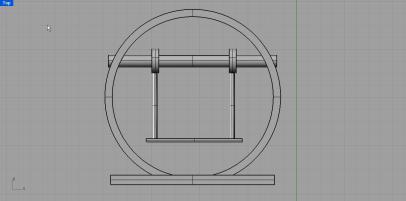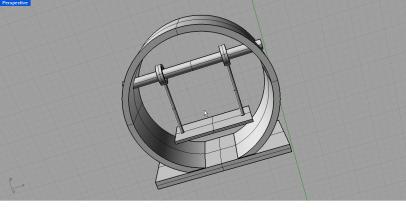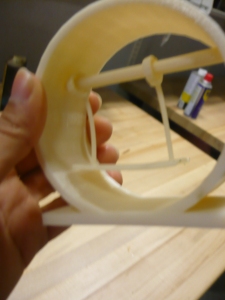3D Printing – Swing
Steps:- 1 Design model -using Rhino, Google sketchup, 3ds max or any 3d modelling software (make sure all lines/solids are perfectly joined)
2 upload into the 3d printing machine
3 cleaning up -removing the extra support material, a little of baking and its ready!
My Model – Swing
Material used:-The 3D printer used ABSplus production-grade thermoplastic (ivory) and a soluble support technology (SST) (dark brown) as support material. Its precision is 0.007″.
Equipments used:-3D System InVision SI2 3D Printer (Bedsize 11.75″ x 7.3″, 8″ high)(ref: Juliet) Strataysys Dimension Elite 3D Printer (Bedsize 8″ x 8″, 12″ high)
Stratasys WaterWorks (for melting support plastic) Process:-




 After acquiring it from the 3D printer the swing was dipped in a stra
After acquiring it from the 3D printer the swing was dipped in a stra tasys water works machine for melting the support plastic (dark brown).
tasys water works machine for melting the support plastic (dark brown).  Improvements:- The swing movement joint could also be incorporated with something that would stop it from going to the sides.
Improvements:- The swing movement joint could also be incorporated with something that would stop it from going to the sides.